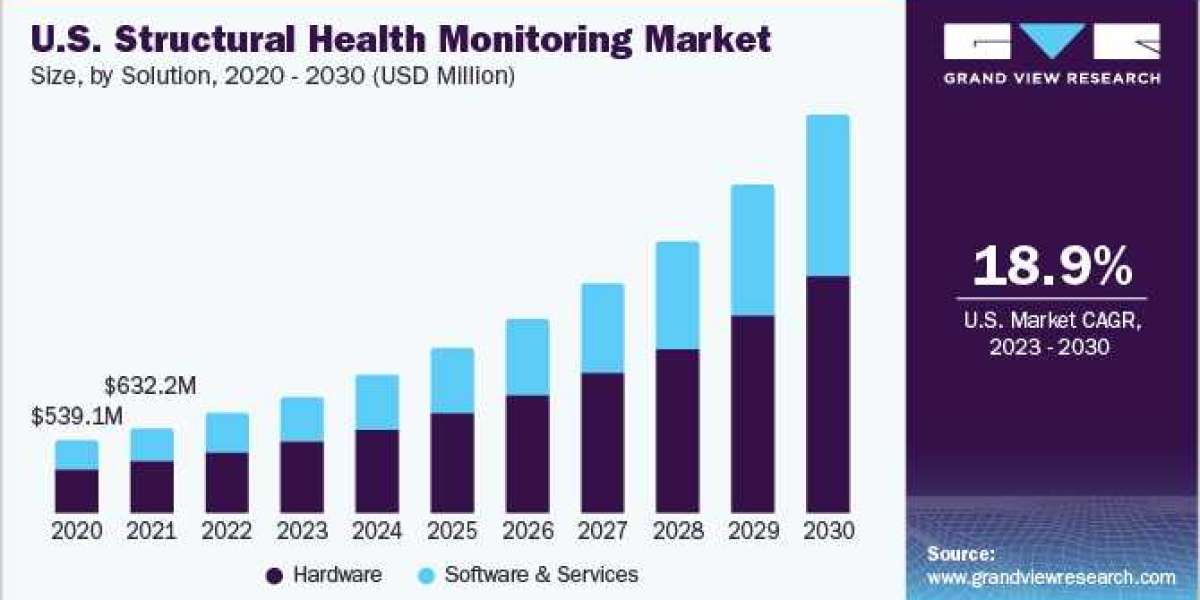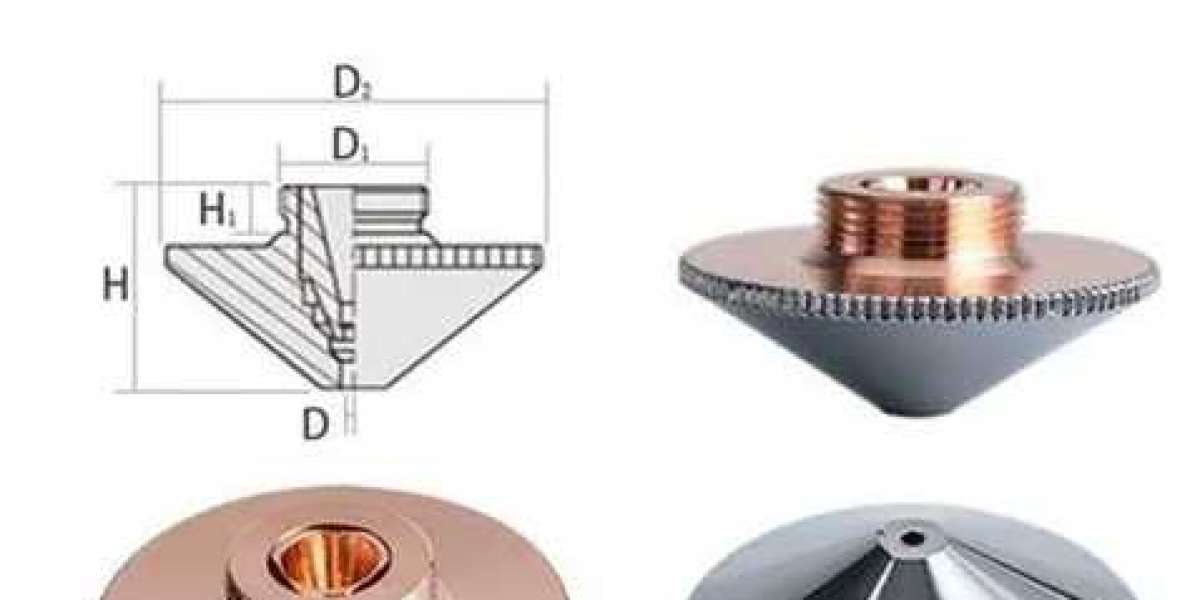Structural Health Monitoring Industry Overview
The global structural health monitoring market size was valued at USD 2.66 billion in 2022 and is anticipated to grow at a CAGR of 18.8% from 2023 to 2030. A rapid expansion in the infrastructure sector is poised to drive the market. Increasing government initiatives towards SHM system standardization and public safety also boost market growth. Stringent regulations pertaining to the sustainability of structures and the declining cost of sensors are projected to provide a fillip to the market.
Structural health monitoring is a tool that enables civil engineers to reduce maintenance costs and improve safety measures of crucial architectural structures. Fundamental functions performed by SHM systems include testing and monitoring of performance and health of large machines, airframes, turbines, and structures such as buildings, bridges, dams, and stadiums.
Gather more insights about the market drivers, restrains and growth of the Structural Health Monitoring Market
This technology integrates data acquisition and transmission systems, sensors, analyzing tools, measuring amplifiers, and software. The system plays a key role in detecting damages using predictive maintenance, boosts the structure's safety, and enables automatic response, thus saving time and costs. In developing countries, ongoing large projects such as smart cities are using these systems to monitor overall infrastructure health.
Growing infrastructural development worldwide and increasing concerns regarding natural calamities are urging governments worldwide to apply certain regulations regarding SHM, which in turn is expected to work in favour of the market. Increasing focus on low-cost energy harvesting systems and adopting distributed optic fibre further contribute to the market's growth. Surging demand for cost-effective constructions and maintenance is anticipated foster market growth.
Large structures such as buildings, dams, bridges, and other constructions are liable to intense loadings during their lifetime, especially during calamities such as cyclones, earthquakes, and typhoons. These events can result in loss of lives, lead to large-scale damage, and entail economic and social complications. Adopting these systems reduces the cost of maintenance and repairs, as these SHM systems are designed to provide prior warnings in the event of a catastrophe. Therefore, various governments are taking initiatives to promote these systems to improve public safety.
Increasing infrastructural development and growing concerns regarding natural calamities drive the market. The industry is predicted to develop due to the rising need for cost-effective construction and maintenance. Large constructions, such as dams, bridges, buildings, and other structures, must be restored throughout their lives, particularly during cyclones, earthquakes, and strong winds. As these events can result in loss of lives, adopting structural health monitoring can reduce the cost of repairs or maintenance as these systems are designed to provide warning in the event.
Infrastructure largely contributes to the well-being of individuals as well as the productivity growth of the economy. Superior infrastructure helps to eliminate the need for inspection staff and maintenance, thereby minimizing expenses. As a result, the rapid infrastructural development across the globe has propelled the demand for structural health monitoring systems. The rise of infrastructure projects in many industries has unfolded numerous growth opportunities for the market. Moreover, countries like China, the U.S., and Germany increasingly invest in the market. As a result, the demand for structural health monitoring is anticipated to increase over the forecast period.
Over the last few decades, many natural disasters have been linked to damaged or failed essential infrastructure. Such an infrastructure often leads to power outages, communication failures, and collapsing buildings, roads, and bridges. Besides, poor infrastructure also impacts the services of related industries such as transport, retail locations, and others. As such, it is essential to implement useful methods for optimal decision-making across the board, from advising on plant site to structural dimensions and their analysis. Structural health monitoring system plays a vital role in providing real-time information. Hence, the market is anticipated to witness increased demand over the coming years.
The future of the proposed retail, corporate, and transportation projects seems uncertain owing to the growing preference for remote working, the growing popularity of online shopping, and the dwindling brick-and-mortar retail sales. It, in turn, is expected to restrain the demand for structural health monitoring systems. Nevertheless, the demand is expected to recover in the long term as the retail industry is poised for significant growth over the next few years as the market reopens and the construction of commercial establishments, bridges, and other infrastructure also gains traction.
Browse through Grand View Research's Communications Infrastructure Industry Research Reports.
- The global fixed wireless access market size was estimated at USD 143.61 billion in 2023 and is projected to grow CAGR of 19.8% from 2024 to 2030.
- The global industrial wireline networking market size was estimated at USD 6.56 billion in 2023 and is projected to grow at a CAGR of 11.2% from 2024 to 2030.
Key Companies Market Share Insights
The industry players are undertaking strategies such as solution launches, acquisitions, and collaborations to increase their global reach. For instance, in April 2021, QUAKELOGIC and SignaGuard, LLC. (a part of MachineSense) launched an innovative process that integrates both firms' patented technologies for structural health monitoring in earthquake-prone areas such as the Himalayas. Frequent earthquakes in the Himalayas region have led geologists to speculate that the whole region is poised for a mega-earthquake at any moment. Since tourism is so prevalent in the area, the damage caused by such a big seismic event could result in millions of deaths.
List of Key Players of Structural Health Monitoring Market
- Acellent Technologies, Inc.
- Campbell Scientific, Inc.
- COWI A/S
- DIGI-TEXX
- Geocomp, Inc.
- GEOKON
- GeoSIG Ltd
- HBK
- James Fisher and Sons plc.
- Kinemetrics
- NATIONAL INSTRUMENTS CORP.
- Nova Ventures Group
- Sixense
- STRUCTURAL MONITORING SYSTEMS PLC
- Xylem
Order a free sample PDF of the Structural Health Monitoring Market Intelligence Study, published by Grand View Research.



